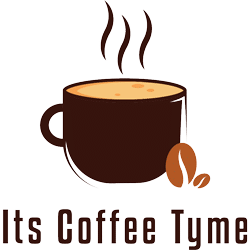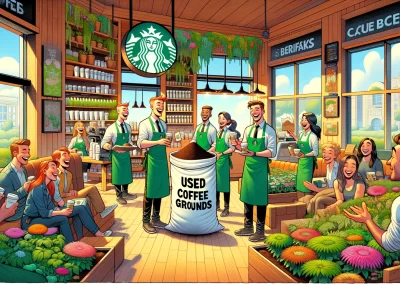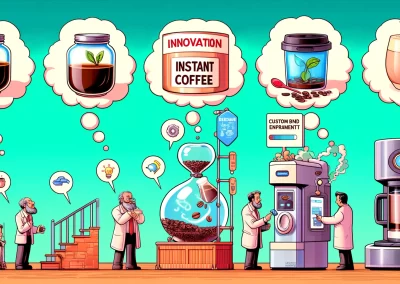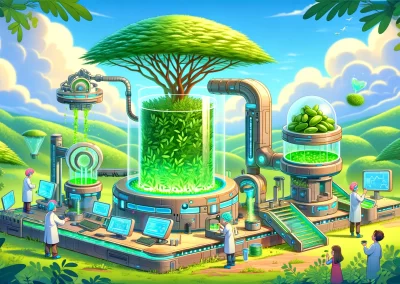Coffee Molecule Rejuvenation. Aging is as sure as a shot of espresso is strong. But it seems that coffee might be doing more than just kick-starting our mornings.
Recent studies are brewing up some intriguing evidence suggesting that a particular molecule in coffee could be flexing its muscles in the fight against age-related muscle decline. As the body ages, muscle strength and function often start to grind down, leading to challenges that affect quality of life.
However, the good news for coffee lovers is that their daily cup might just contain a secret weapon for healthier aging.

This magic bean could hold more than just a caffeine kick. Researchers have isolated a molecule that’s shown promise in maintaining muscle health in the aging population.
It appears that coffee isn’t the only source of this compound, as it naturally occurs in certain plants and even within the human body itself.
But before anyone starts chugging a coffee pot, it’s worth noting that science is still percolating on how much and how often this molecule needs to be consumed for optimal benefit.
While no one is suggesting coffee is the fountain of youth in a cup, these findings could lead to a groundbreaking approach to muscle maintenance for seniors.
The power of this molecule found in the aromatic beans could be immense, offering a potential new strategy for supporting an active and empowered lifestyle well into the golden years.
Who knew that something as simple as a morning brew could hold the key to such vitality—another reason to cherish that coffee ritual.
Understanding Sarcopenia

Sarcopenia is the unwelcome guest that crashes the aging party, but understanding its depths is key to keeping muscles from waving the white flag too soon.
The Role of Nutrition in Muscle Health
Nutrition is like the VIP pass to muscle health; it’s crucial.
Folks cruising through their golden years need a diet rich in proteins, vitamins, and minerals to help maintain muscle mass. Without these vital nutrients, muscles might just go on a strike, and trust me, nobody wants that.
Age-Associated Muscle Decline
When the candles on the birthday cake start feeling like a small bonfire, that’s when age-associated muscle decline sneaks in.
Muscle loss isn’t picky; it can lead to frailty faster than a cat video going viral. This isn’t just about losing a flex competition; it’s about staving off age-associated diseases and pushing for healthy longevity.
Nobody’s asking for biceps that could break the internet, but staying strong enough to open that pesky jar of pickles? That’s the goal.
The Science Behind Coffee Molecules
Recent research has reveled that certain molecules in coffee contribute significantly to the well-being of skeletal muscle, particularly as it ages. The caffeinated kick isn’t the only upside; there’s a whole lot more going on under the hood with these beans.
Caffeine and Muscle Function
Caffeine is much more than a wake-up call—it’s a bona fide muscle motivator.
This powerful component of coffee is known to enhance skeletal muscle function by influencing the metabolism that keeps our muscles in the game and fighting fatigue.
Small doses can work wonders, invigorating our muscles to give them that extra oomph.
Trigonelline’s Impact on Metabolism
Lesser known but no slouch in the muscle department, trigonelline—another key player found in coffee—has a knack for boosting cellular metabolism.
This nifty molecule doesn’t just sip on energy; it turns it up to eleven, offering aging muscles a round-the-clock metabolic jolt that’s like hitting the refresh button on muscle cells.
Mitochondrial Health and Muscle Aging

The aging process isn’t kind to our muscles, but the mitochondria within them play a pivotal role in how well they age. These cellular powerhouses are central to maintaining muscle health as we get older, and a couple of key players in this process are NAD+ and vitamin B3.
NAD+ in Aging Muscles
NAD+, short for Nicotinamide Adenine Dinucleotide, is like the MVP of cellular health, especially when it comes to our muscles as we age.
Its levels naturally decline as we get older, a classic cellular hallmark of ageing. This decline contributes to reduced mitochondrial function, leading muscles to say, “I’ve had enough!” and age faster.
A molecule found in coffee has been linked to increasing NAD+ levels, which might just be the rejuvenation ticket for aging muscles.
Imagine your cells sipping on a latte to keep their energy up, that’s how it’s helping our mitochondria stay spry.
Vitamin B3 and Mitochondrial Function
Now let’s chat about vitamin B3, also known as niacin or nicotinamide.
This gem of a nutrient doesn’t just help you flush; it also boosts those NAD+ levels.
It’s like a personal trainer for your mitochondria, keeping them in tip-top shape.
Without enough vitamin B3 in our system, our mitochondria could get sluggish, and nobody wants sluggish mitochondria. They’d end up looking like those gym members who hit the treadmills for all of five minutes and call it a day.
Proper vitamin B3 intake helps keep the cellular energy flowing and your muscles acting younger than their years.
Effects of Coffee on Muscle Recovery and Strength
Empowering weekend warriors and fitness enthusiasts alike, the latest studies reveal that coffee might just be the elixir for tired muscles.
Researchers are perking up at the potential benefits of coffee molecules on muscle recovery and rejuvenation. Let’s dive into the specifics of how a cup of Joe might be more than just an early morning eye-opener.
Coffee and Post-Exercise Muscle Recovery
After a grueling workout, muscles scream for relief. The good news? A molecule in your brew could be the answer.
Findings from Forbes and PubMed suggest that coffee accelerates muscle glycogen recovery post-exercise.
Glycogen, the stored form of glucose, is vital for muscle energy. Who knew your post-gym espresso shot could actually be giving your muscles a much-needed glycogen gulp?
- Glycogen replenishment: Speeds up post-exercise muscle recovery by replenishing glycogen stores.
- Insulin response: May improve the insulinemic response, promoting glucose uptake by muscle tissues.
Enhancing Muscle Strength with Coffee Derivatives
But the benefits of coffee don’t just stop at recovery.
Research is brewing that coffee derivatives may enhance muscle strength itself.
Papers published in sources like ScienceDaily highlight a natural molecule found in coffee that could boost muscle function during aging.
- Strength improvement: Coffee components may aid in the long-term improvement of muscle strength.
- Muscle function: NAD+ levels, associated with improving muscle function, are increased with coffee molecules.
Nutritional Synergies for Muscle Health

As we age, maintaining muscle health becomes a bit like a strategic game of nutrition chess, where every piece is essential and works better together. In this intricate play, some combinations are proving to be the grandmasters of dietary support for our muscles.
Synergistic Effects of Fenugreek and Coffee
Fenugreek, an herb with a long-standing rep in traditional medicine, isn’t just about spicing things up in the kitchen. It’s about muscling up, too.
When fenugreek teams up with our beloved coffee, it seems to tap-dance on aging muscles, giving them a new lease on life.
This dynamic duo is not only delicious but also packs a punch of trigonelline, a compound that’s turning heads in muscle research.
So next time you sip on that latte, remember it’s more than just a caffeine kick; it’s a muscle mojo boost.
Vitamins and Amino Acids in Muscle Preservation
Let’s zoom in on the heavy lifters of the nutrient world: vitamins and amino acids.
These are the unsung heroes when it comes to muscle maintenance.
Especially L-tryptophan, not just the stuff of turkey day lore, but an essential amino acid that’s all about making proteins and keeping the mood lit.
Now, let’s not forget the energy powerhouses — throw in a cocktail of B-vitamins, and you’re looking at not just a boost in mood, but a surge in muscle stamina and recovery.
It’s like a health elixir in every meal.
Research Developments and Collaborative Studies
Recent advancements in muscle rejuvenation research have sparked exciting collaborations, paving the way for innovative solutions to aging muscles.
Scientists have turned their attention to a remarkable molecule with roots in our morning brew.
Groundbreaking Studies by Nestlé Research
Nestlé Research is stirring up the science scene with their focus on nutritional science and its impact on aging.
Collaborating with global universities, Nestlé’s teams are brewing up a storm of data hinting that coffee could be more than just a wake-up call. Their studies suggest that a natural compound found in coffee can revitalize muscle function.
Contributions of Assistant Professor Vincenzo Sorrentino
Assistant Professor Vincenzo Sorrentino, hailing from the University of Southampton, works closely with the University of Melbourne, University of Tehran, and University of South Alabama, to weave together expertise across continents.
Sorrentino’s research dives into the cellular mechanisms that could be key to turning back the clock on muscle aging, using coffee-derived molecules.
Sorrentino’s work, characterized by its meticulous approach and insightful outcomes, contributes significantly to the broader research consortium‘s efforts. This collaboration embodies a shared vision: to shed light on how daily dietary choices could potentially offer more than just taste, but a sip of youth for our muscles.
Lifestyle Recommendations for Healthy Longevity
Our golden years should be just that: golden. Packed with vim and vigor, the twilight years can be your encore if you tune up your lifestyle habits. Here’s how you can pull the curtains back on a life jampacked with vitality.
Daily Physical Activity and Independence
Physical activity isn’t just a feel-good pastime; it’s a cornerstone of sustaining physical independence.
Studies by the Healthy Longevity Translational Research Program stress that staying on the move is critical. Whether it’s Tai Chi in the park or pumping iron at the gym, regular activity maintains muscle function and can keep you as spry as a sapling.
- Structured Exercise: At least 150 minutes a week of moderate aerobic activity or 75 minutes of vigorous activity.
- Strength Training: Aim for muscle-strengthening activities twice per week.
- Balance and Flexibility: Activities like yoga or stretches maintain balance, reducing fall risk.
Daily exercise staves off sarcopenia—the age-related loss of muscle mass and strength—keeping you less reliant on others and enjoying a self-sufficient life.
Dietary Precursors and Supplemental Interventions
Bet your coffee ritual didn’t seem like a scientific boon for muscles, did it? Research highlights molecules in coffee that may assist in muscle health as we age.
These findings inject new buzz into discussions about dietary precursors. For example, nicotinamide mononucleotide (NMN) and nicotinamide riboside (NR) are vital for cellular energy and repair.
- Foods to Focus On:
- Coffee (for the muscle-loving molecules)
- Dairy, poultry, and fish (for natural precursors that boost cell health)
- Supplements to Consider:
- NMN and NR for sustaining high cellular energy levels
- Multivitamins tailored to aging adults
While scooping up powders and popping pills isn’t a silver bullet, incorporating the right supplements along with a nutrient-rich diet can keep your cells dancing to the tune of youth.
It’s about giving your body the raw materials it needs to repair and thrive.
Turn the tables on aging by keeping those muscles flexed and embracing the cellular cheerleaders in your morning brew. Because you’re not just getting older, you’re getting bolder.









